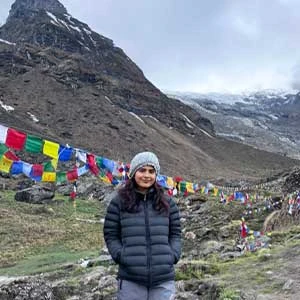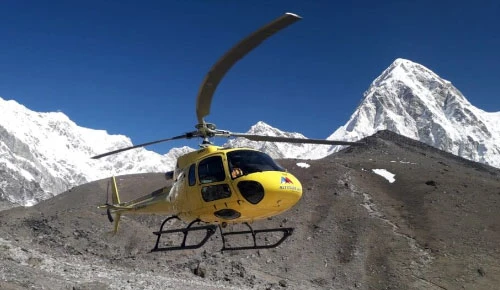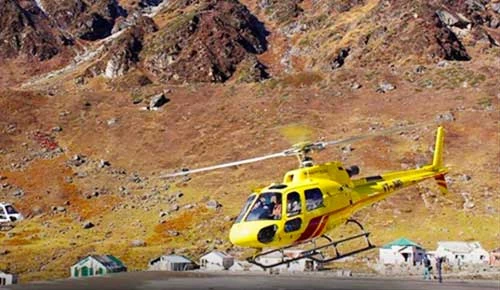Best Season for Manaslu Region Trekking
The Manaslu Region seems to be one of the best places that preserves the timeless passage of history. While cloaked in the shadow of Manaslu, the world’s eighth tallest peak, one can capture the distinct and timeless character of the valleys, the villages that depict the coexisting and nature-infused lifestyle, and the trails with rich and complex pieces of nature that make one question whether the entire trek is covered.
While trekking in Manaslu, a person will notice how quickly the scenery is changing at every blink. The transition from green to the mountain caps to the valleys to snow creates an alluring blend for the eye to enjoy. Autumn brings a second spring, with skies, mountains, and valleys glowing in golden light. The season’s crisp air and clear visibility highlight the beauty of every peak and valley. The calm quiet of the snow is beautiful, and the whole scene feels amazing, almost like something from another world. The meadow during the summer then becomes extremely and richly green, and the valleys are well silenced because of the moisture. The captivating view of the mountains is gently smooth in their alpine summer.
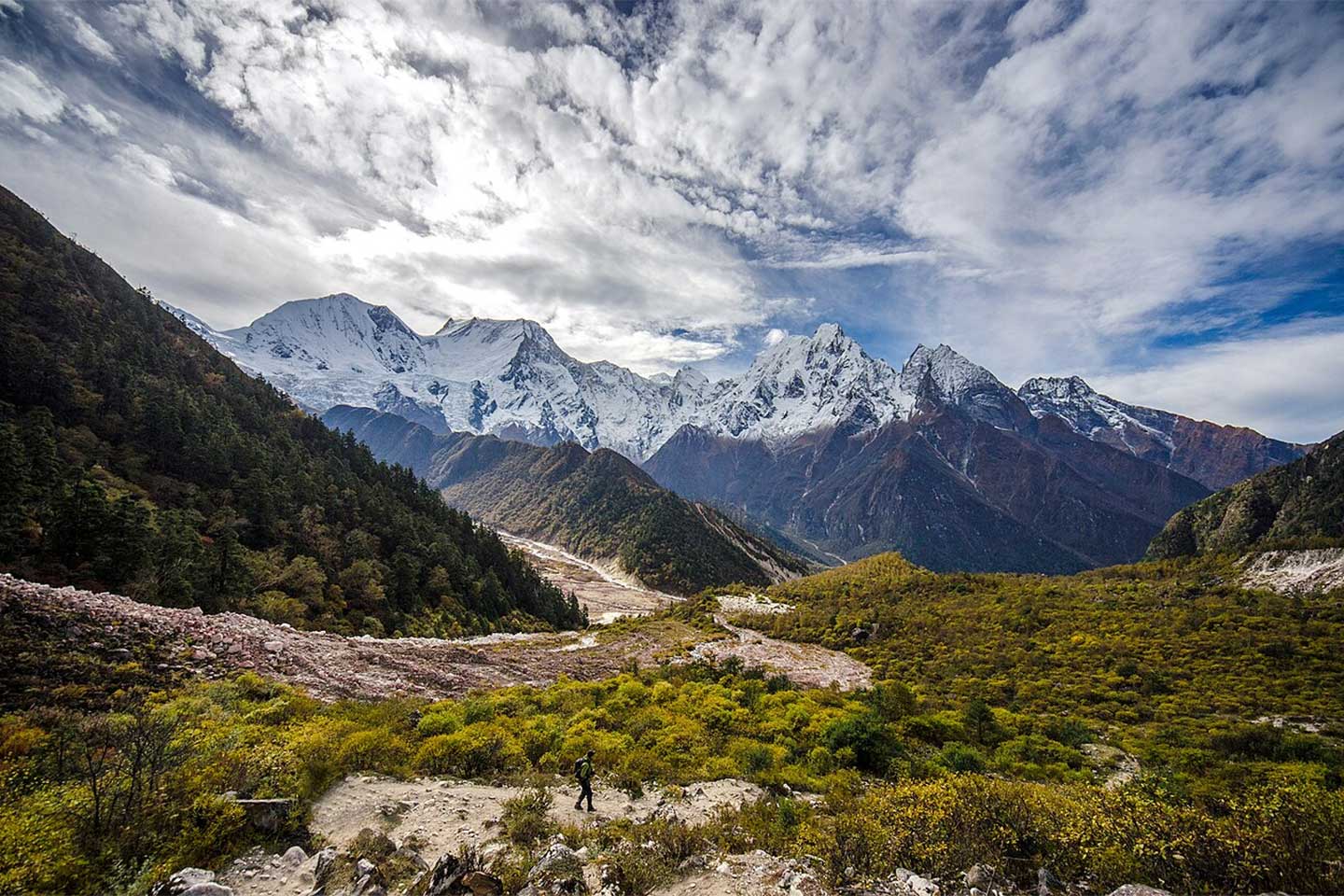
Selecting the ideal time for a Manaslu trek isn’t simply a checklist task; it can change your entire journey. Seasonal shifts influence the weather, the trail’s energy, the presence of other trekkers, and the nature of interactions with local communities.
Let’s dive into what each season offers and a few practical tips to keep in mind. After reading, you’ll know the ideal time to tie your boots and start your trek, making sure your adventure unfolds just as you’ve envisioned.
Table of Contents
Overview of Seasons in the Manaslu Region of Nepal
Spring (March to May)
Spring is popularly said to be one of the ideal times to trek in Manaslu, and rightfully so. With the passing of cold in the winter season, the area is transformed into a new spring of colors and plant life. The air is fresh and peaceful, and daytime temperatures are better suited to trekking: not too hot, but just warm enough to be outdoors.
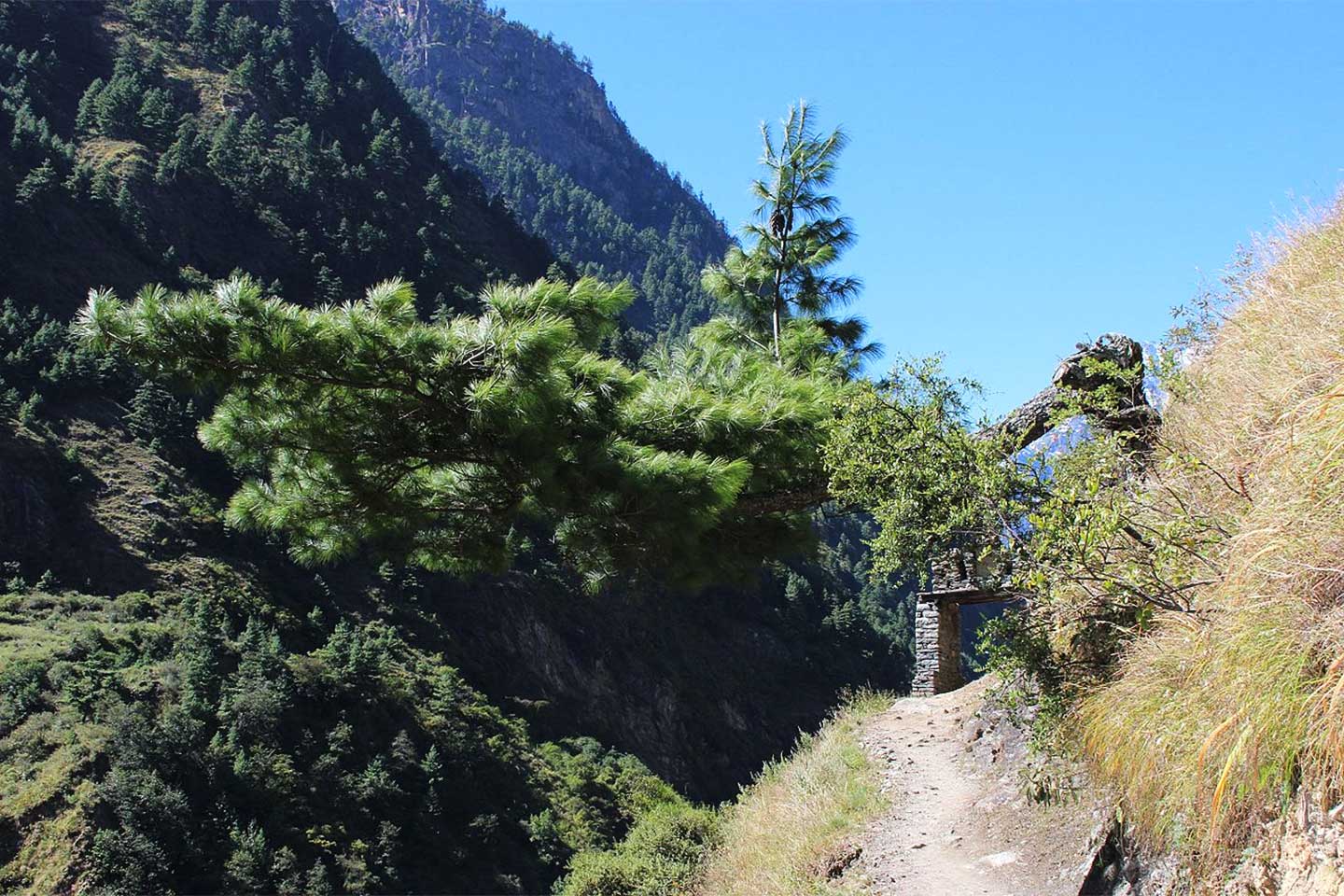
The spring is one of the greatest attractions of the whole year, with rhododendrons and other wild blossoms coloring the forests and hillsides in all their beautiful shades of red, pink and white. One of the most memorable parts of the Manaslu trek in spring is walking through trails full of blooming flowers.
Monsoon or Summer (June to August)
The Manaslu area is under monsoon influence during the summer season; thus, heavy rains are typical at this time of the year and for most trekkers, this is the less popular season. However, there are some singular reasons why a few of them still decide to discover Manaslu this time.
Most of the time during the rain season the showers are continuous and if not that, they are very intense. They can also last for very short times or a few hours, which can soak the heavy-mixed dirt and make them slippery and muddy. This would decrease your speed and you would have to take extra care, particularly on the steep or rocky parts. River fords, which are going to be included in the Manaslu trek anyway, get harder as the water levels increase rapidly after a downpour.
Autumn (September to November)
Autumn is the best season to go hiking in Manaslu and generally in Nepal. The monsoon showers have removed the dust and haze and have brought in a neat and fresh air with stunning and excellent visibility. Days are full of sunlight and warmth, while the nights are cool with no coldness and thus very suitable for trekking during the day.
The nature of the area becomes charming with the gold colors, particularly when the crops are being collected in the villages that are along the route. The mountains of Manaslu and the neighboring Himalayan peaks can be seen clearly with little or no cloud cover. Though, autumn is also that time when the maximum number of trekkers take their trips. The trails and teahouses may get occupancy, and the number of people may be high, particularly in October. And if you like a vibrant atmosphere and meeting other trekkers from all over the world, then autumn is the right period. Because of the crowd of visitors, it is wise to book accommodations in advance.
Winter (December to February)
In the wintertime, cold temperatures are experienced, especially at high altitudes, and because of the cold, the passes and routes are getting covered by the snow. During the day, the sun is always there to heat the valleys, but at nights and early mornings, it seems that freezing temperatures are always there. Above 3,000 meters, both trails and mountain passes will be covered with snow; even the Larke La pass, which is well known may be closed or it may be an unsafe place to pass.
Still, the night sky during the winter is the best you can dream of. Winter and fall air are fresh, with a slight aroma of trees in the breath, and, when the weather at the trek is good, the splendid view of Mt. Manaslu and of the other peaks surrounding the Himalayas is just breathtaking. The snow also acts as a sort of background for the dreamlike and overall hiking atmosphere to be quiet and enchanting.
The winter of Manaslu keeps its charm as a lovely dark time to be there; when most of the region is closed, with fewer people, the stars are extremely visible, the immensity of the mountains is at its most spectacular and the magic of a snowy mountain is felt.
Best Spots in Manaslu by Season
Larkya La Pass
Standing 5,160m tall, Larkya La is the highest and most dramatic point on the Manaslu Circuit. It is by far the best reward for hikers, with breathtaking views of some of the most dramatic peaks of the Himalayas, including Mount Manaslu itself. During Spring and Autumn the weather is more settled, with clear blue skies for miles and miles, fantastic photo opportunities, and spectacular mountain views.
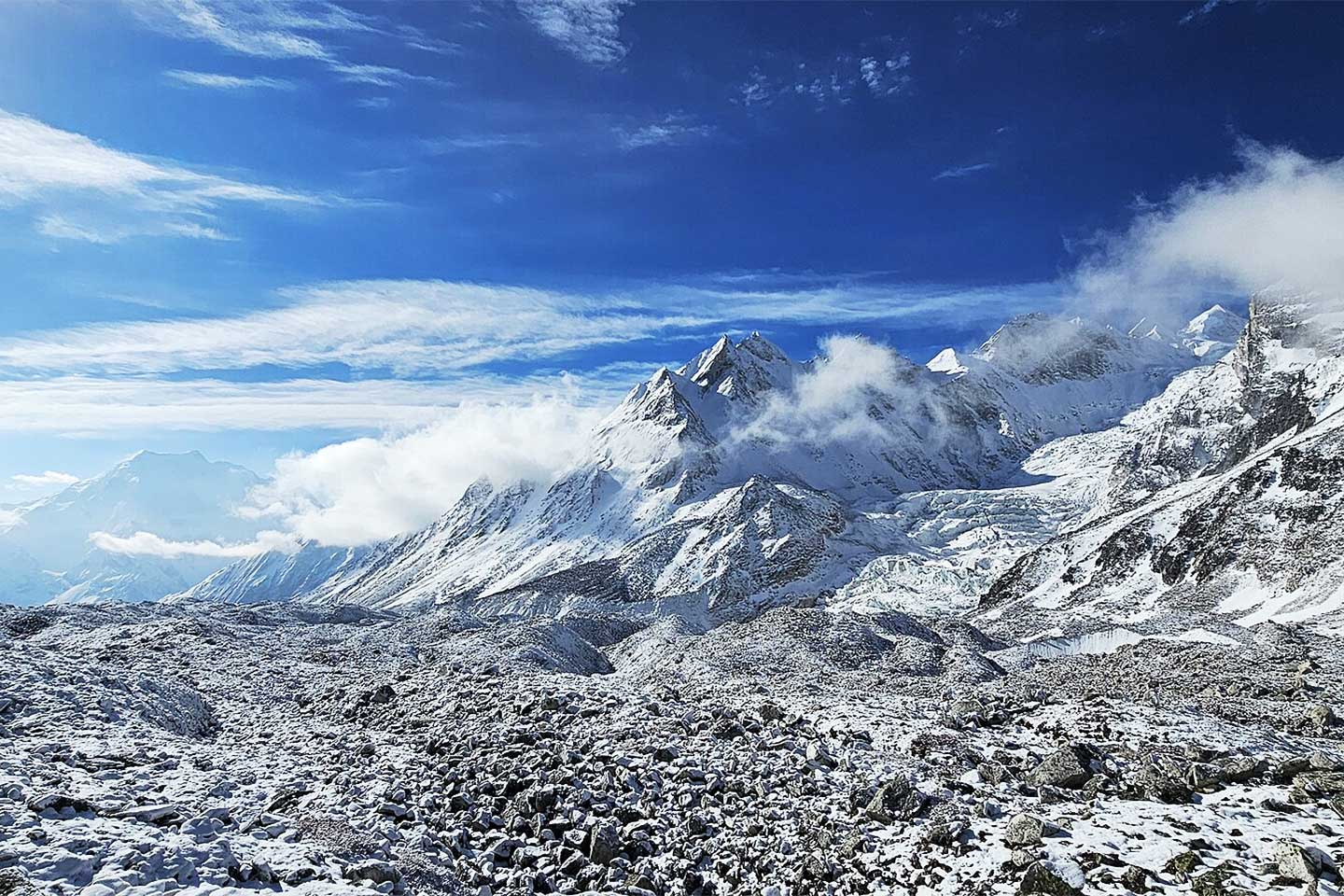
In winter, the pass is often blanketed with snow, which adds a surreal, almost mystical atmosphere but also brings challenges like icy trails and colder temperatures meaning only well-prepared and experienced trekkers should attempt it then. During the monsoon season, heavy rain and snow can make the pass dangerous or even inaccessible due to landslides and avalanches, so it’s generally avoided at that time.
Samagaon Village
The picturesque hamlet, resting gracefully in a green valley, is an ideal escape route for trekkers. In the season of spring, Samagaon and its neighboring areas not only flourish but also change into vibrant hues where along with rhododendrons the woods and the tracks are getting adorned with their brilliant reds, pinks and whites coming from various wildflowers.
Visiting this village is also the best way to discover the people and their ways. Autumn in Samagaon is lovely as well; the grains shimmer in the sun, and the mountains present themselves as if made of glass, thus giving great views for dawn and dusk. As the cold settles, the village is wrapped by the snow which quiets it and gives the sense that it is still and even a bit old-fashioned. Quite contrary to the lively forests, the area is inhabited by wet and foggy weather during the monsoons.
Manaslu Base Camp
Manaslu Base Camp is a close and intimate experience of the magnificent Manaslu peak by trekkers who are willing to go further off the trail. It is compensated by unrivaled mountain grandeur, but the way to it is the more difficult one. Typically, spring and autumn are clear and reveal the sharp ridges and glaciers of the peak in beautiful detail.
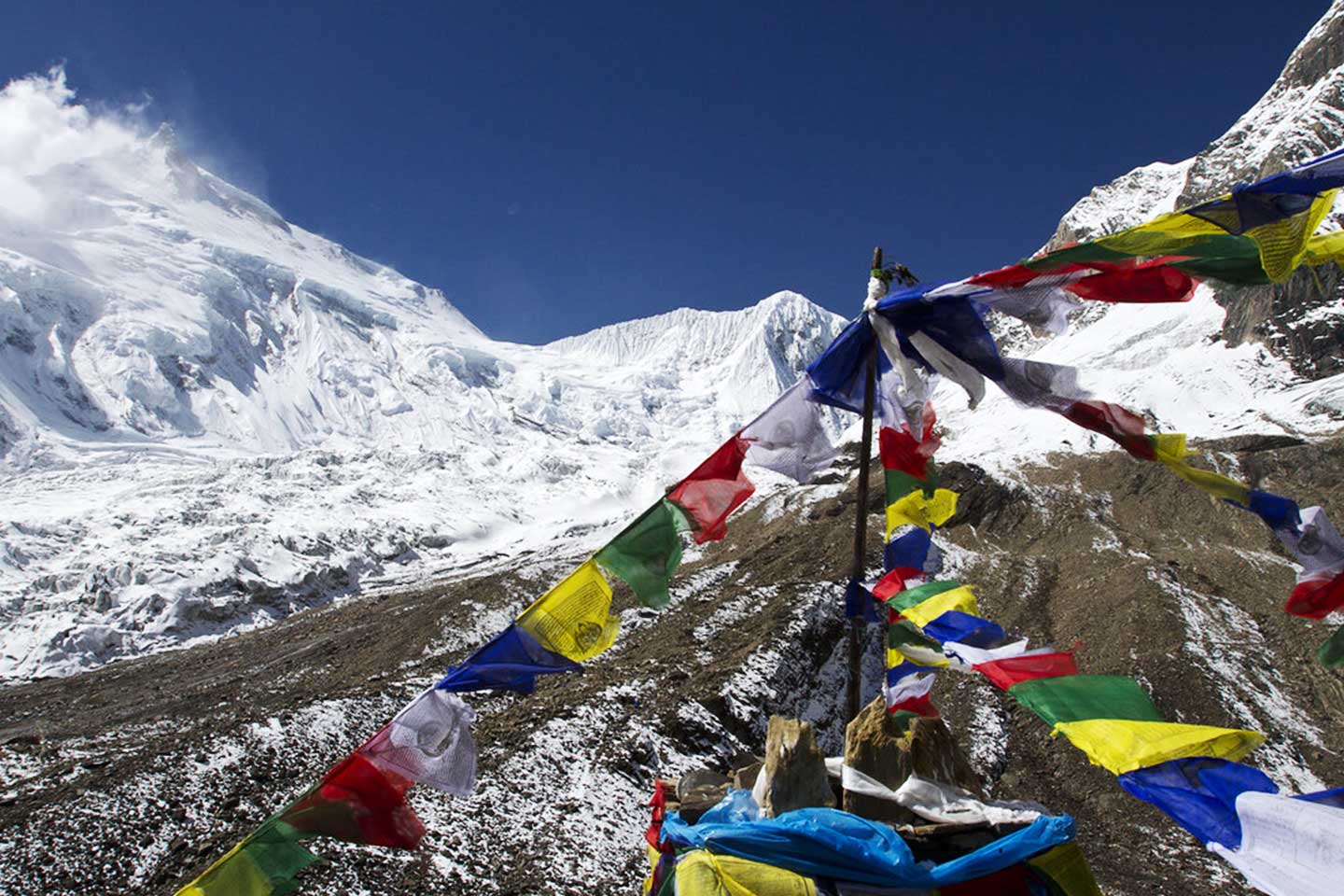
The mountains are apparently only concealed by the clouds in summer, and that is all right since the hills are now the brightest green and the waterfalls are so loud you can hear them even when far away. In winter, the snow falls very slowly and you actually feel that you are totally isolated from the rest of the world. It is cold, and there shall be no noise.
Pung Gyen Gompa
An old Buddhist monastery, this, which displays the region's spiritual legacy, offering expansive views of the Manaslu valley beneath.
The area is delighted with blossoming flowers and fresh green trees in the spring, and the gompa is bathed in warm amber light, providing excellent harmony with the old building. Quite often you can find snow on the gompa and the areas around it during the cold months. making it a glittering and picturesque place to be. The rice terraces around the shrine and the forests are growing heavily with the rains (during monsoon), making the place more beautiful and colorful.
Birendra Lake
The somewhat unrecognizable Birendra Lake is a nature spot that is regarded as a peaceful and quaint one on the Manaslu Trek. In spring, the lake is wrapped with wildflowers and fresh green, and people can take it as the best place to rest and take pleasure in the scenery.
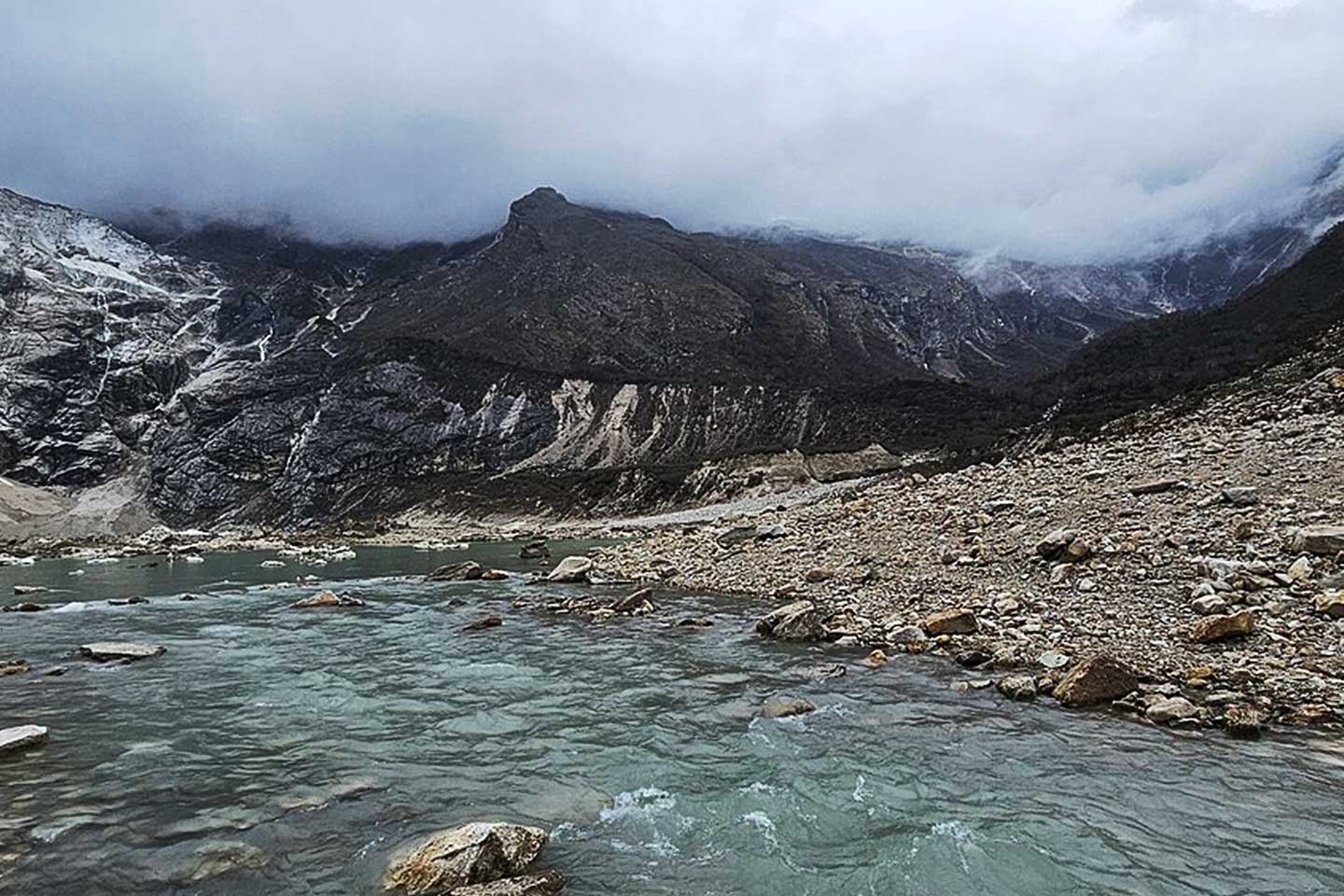
Direct reflections of the sky and the mountains on the water surface of the lake to add to the natural silence of the place are given by the autumn. The lake appears to be tranquil and transparent as the snow covers all the surroundings in the winter. The rainfalls from the monsoon here bring a lot of new trees and streams, but the area may also be very muddy and difficult to get to at this time.
Packing Essentials for the Manaslu Trek by Season
Packing right is crucial for a comfortable and safe Manaslu trek. Since conditions change drastically by season, here’s a detailed list of essentials broken down by each trekking season:
Spring (March to May)
- Low-weight, moisture-managed base layers
- Fleece or down jacket to wear in the cold morning and night
- windproof and waterproof jacket (lightweight)
- comfortable loosening trek pants and shorts
- Trekking ankle boots of good quality
- Strong sun, higher-altitude sunglasses, and sunscreen at higher altitudes
- Sun protection, hat, or cap
- Long jacket, warm hat, and gloves on a cold night
Summer/Monsoon (June to August)
- Good-breathing waterproof pants and jackets
- Backpack/shoe rain covers
- Synthetic/wool clothes to dry fast (no cotton)
- Good-grip waterproof trekking shoes or boots
- Additional waterproof dry bags or electronics/documents zip-lock bags
- Insect repellent and a wide-brimmed hat
- Slippery/muddy terrain trekking poles
Autumn (September to November)
- Thermal base layers for warmth
- insulation mid-layer, such as fleece or a light down jacket
- Outer shell windproof, waterproof
- Heavy-duty but well-worn trekking boots
- Wool/synthetic socks
- Sunscreen glasses and sunglasses
- An antagonist hat, glove, and neck warmer in the morning and nighttime
- Approximately -10 degrees Celsius (14 degrees Fahrenheit) sleeping bag
Winter (December to February)
- Insulated down jacket (heavyweight)
- Thermal base layers (top and bottom)
- Waterproof and insulated pants
- Warm gloves, a hat that covers ears, and a neck gaiter or scarf
- Waterproof insulated boots with thick socks
- Sleeping bag rated for -15°C (5°F) or lower
- Hand warmers for extra warmth
- Extra layers to add as needed
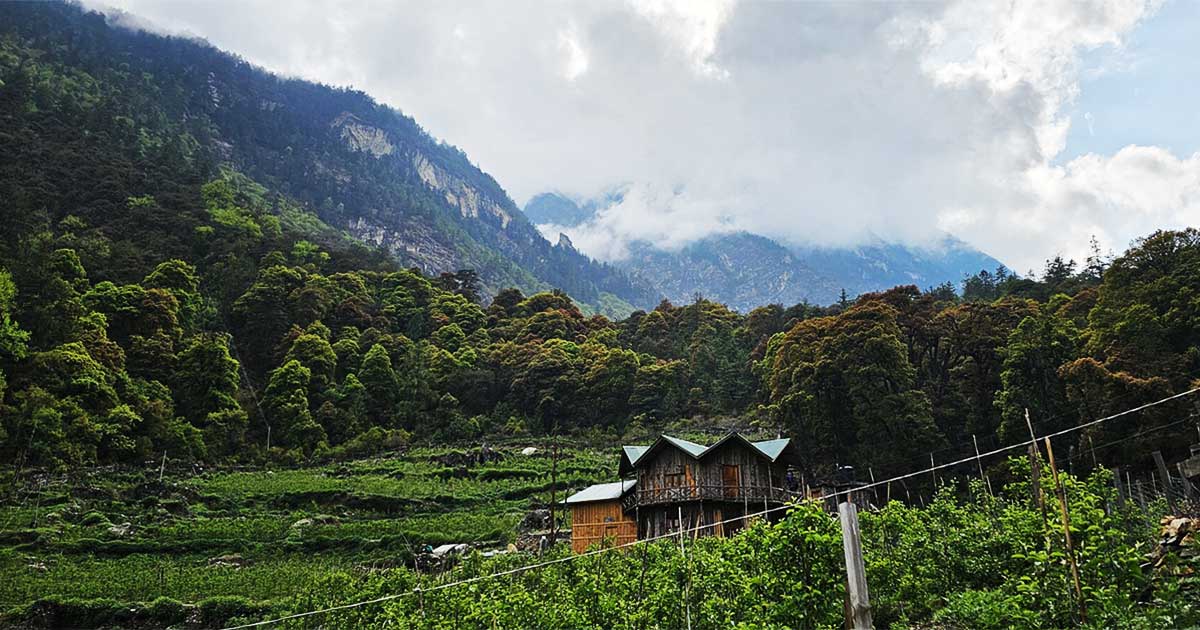
Choose Your Manaslu Trek Package
To make your journey hassle-free and perfectly suited to your chosen season, we offer a variety of Manaslu trek packages:
- Manaslu Circuit Trek - 13 Days
- Manaslu Express Trekking - 10 Days
- Manaslu Tsum Valley Trekking
- Manaslu Circuit Luxury Trek
- Manaslu Base Camp Trekking
Final Words
Preference of when to hike Manaslu is more than just a date on the calendar; it is a way of preparing to make the entire experience what you want it to be. Whether it’s spring’s vibrant flowers, autumn’s crisp vistas, winter’s quiet solitude, or the monsoon’s lush greenery, Manaslu has unforgettable moments in every season A better knowledge of the seasons, better planning, and proper packing will make your journey less rough and more enjoyable. There are many reasons why there is magic, challenges, and reward in every period of time. so do not live in fear; listen to your inner you and go when it feels most comfortable to you. No matter when you come, you will still have the most magnificent mountains, the beautiful villages, and the diverse culture of Manaslu, which are ready to make your trek a memorable one. So prepare, be excited, and do come back with memories to last a lifetime.




